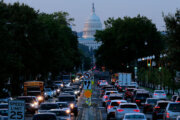Stock markets are often characterized as climbing a “wall of worry,” overcoming perceived risk or uncertainty that influences investor sentiment. Markets successfully climb the wall of worry when investors see progress toward critical milestones and believe that potential risks will be resolved or will fade in importance.
Unfortunately, investors often fail to consider less apparent factors that may be more consequential than the worries that gain the most media attention. Four of the highest profile considerations on the current wall of worry may be less consequential for the market than some less visible considerations.
Debt could be a problem. Excesses in credit markets may be a greater risk than rising interest rates. The tightening labor market is creating some wage inflation in certain economic segments, supporting the Federal Reserve‘s stated intention to raise interest rates. However, demographic trends and the impact of technology will likely restrain the rate of inflation, making it likely that rates will rise at a slower pace than many fear. The “new normal” for interest rates is likely to be lower than in past economic cycles.
[See: 7 of the Best Stocks to Buy for 2018.]
The lack of discipline in credit markets gets less attention, but may be a higher risk for the markets. Covenant-lite debt issuance is back, despite consensus thinking that lenders would learn lessons from past credit meltdowns. More than 70 percent of institutional loan issuance this year featured covenant-lite terms. Some of this year’s debt offerings provide evidence that investors are too complacent about credit risk.
Netflix (Nasdaq: NFLX) is projected to have $2 billion of negative cash flow this year and faces considerable potential competition over the next 10 years. Despite a potentially volatile future, Netflix issued more than 1 billion euros of bonds with a 10-year maturity and coupon rate of 3.625 percent. Argentina has defaulted on its debts five times in the last 100 years, and has spent 75 years of its two-century history in default. Despite the country’s checkered past as a borrower, investors rushed to buy Argentina’s $2.75 billion, 100-year bond. Tajikistan, a country best known for its economic reliance on Russia and for having one of the highest-volume drug trafficking routes in the world, recently completed a $500 million bond issue, an amount equal to 7 percent of its annual GDP.
China triggers a global recession. China isn’t likely to have a “debt meltdown,” but a slowdown could be a catalyst creating a global recession. China’s challenges include high debt among state-owned enterprises and a troubling rise in speculative shadow banking activities. The debt buildup in China creates concerns that China will experience a financial crisis resembling that of Mexico in the mid-1990s or Asia in the late 1990s.
Unlike Mexico and the countries hit hardest during the Asia crisis, China has limited external debt, considerable savings and more than $3 trillion of foreign exchange reserves. The government also has meaningful influence over both creditors and debtors. China is gradually reducing leverage at financial institutions and state-owned enterprises, while slowing the pace of real estate speculation.
The fallout from China’s debt binge will be influenced more by the extent and pace at which policymakers in Beijing act in order to write off bad debts and recapitalize local banks than by the actions of policymakers elsewhere in the world. The risk to the global economy is of a policy mistake inside of China, as more aggressive policy moves would satisfy the more austere economists around the world, but potentially at the cost of a severe slowdown in growth within China. With China representing 28 percent of global growth last year, a hard landing in China would likely create a painful economic slowdown for the rest of the world.
[See: 10 Stocks That Oppenheimer Analysts Adore.]
Regulatory changes. Changes in regulatory priorities may provide a bigger long-term boost to economic growth than the proposed tax plan. The proposed Republican tax plan is dominating the news cycle from Washington. The tax plan will create significant winners and losers, but the net impact of the plan may not provide much of a boost to long-term growth.
Some are characterizing the economic boost from tax cuts and fiscal stimulus as a short-term sugar high that would only accelerate the timing of rate hikes intended to curb inflation. Regulatory changes may provide a longer-lasting boost to economic growth.
For example, small company stocks and the financial sector have rebounded solidly over the past year, in part attributable to expectations that some of the more restrictive or intrusive regulations would be scaled back under President Donald Trump. An easier regulatory environment could stimulate bank lending and support a pickup in growth, with perhaps some unintended consequences if deregulation goes too far.
Some sectors are overvalued. Investors are worried that a second dot-com bubble could burst, but valuations of consumer staples and utilities may be a bigger risk. Apple ( AAPL) and the “FANG” stocks — Facebook ( FB), Amazon.com ( AMZN), Netflix, and Google ( GOOG, GOOGL) — are among this year’s biggest winners.
The valuations of Amazon, Netflix and Tesla ( TSLA) draw comparisons to the dot-com mania of 1999, and support fears that there is a bubble that is about to burst. Deceleration in growth is a risk for technology leaders, but those expecting a technology sector meltdown are likely to be disappointed. Although the valuations of some of the highest multiple stocks may not be sustainable, there are notable differences between today and 1999. Valuations during the dot-com era reached dizzying levels, with the price-earnings ratio for the entire technology sector exceeding 50 percent in 2000. At a forward price-earnings multiple of around 19, technology sector valuations are comparable to the slow-growth utility and consumer staples sectors.
Although consumer staples stocks are popular for their high dividend payouts and predictable cash flow, valuations of many appear elevated. McDonald’s Corp. ( MCD) is trading at approximately 26 times next year’s earnings, while Coca-Cola Co. ( KO), PepsiCo ( PEP) and Procter & Gamble Co. ( PG) trade at approximately 22 times. In comparison, Alphabet, parent of search-engine Google, trades at a forward price-earnings multiple of 32 times, and Facebook trades at a multiple of about than 30 times. For a slightly higher earnings multiple, Alphabet and Google offer considerably higher (though more volatile) growth prospects than the consumer staples stocks that have been favorites for dividend-oriented investors.
Bull markets eventually come to an end, often with little warning. The trigger for the end of this bull market may come from one of the more subtle considerations that are less prominent on today’s wall of worry. The discerning investor will examine some of the more subtle risks and opportunities in the market to identify inflection points in market sentiment and potential disruption of the current trend.
[See: 7 of the Best Tech Stocks to Buy for 2018.]
Disclosures: Registration with the SEC should not be construed as an endorsement or an indicator of investment skill, acumen or experience. Investments in securities are not insured, protected or guaranteed and may result in loss of income and/or principal. Unless stated otherwise, any mention of specific securities or investments is for hypothetical and illustrative purposes only. Adviser’s clients may or may not hold the securities discussed in their portfolios. Adviser makes no representations that any of the securities discussed have been or will be profitable.
More from U.S. News
9 ETFs That Go Up When the Market Goes Down
8 Boring Stocks With Soaring Potential
The Top 10 Investment Portfolio for Millennials
Is Wall Street Climbing the Wall of Worry? originally appeared on usnews.com







